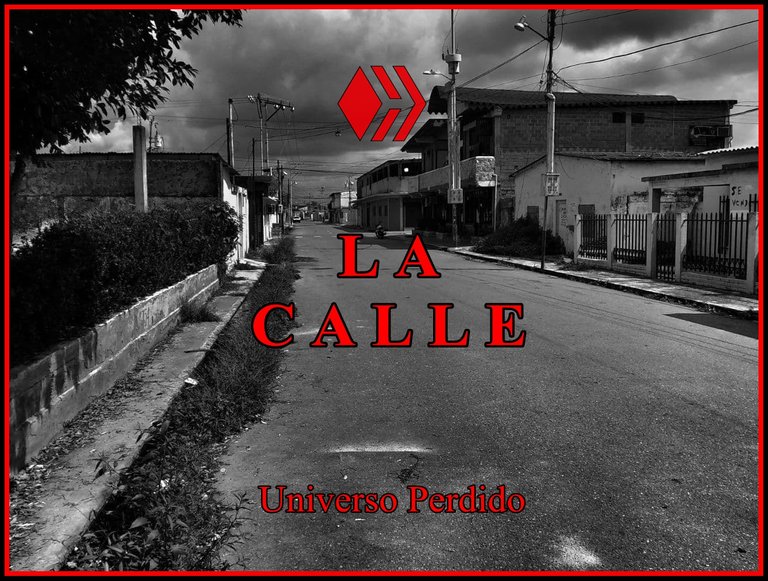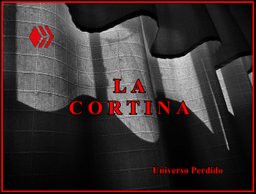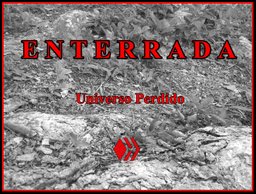
«Desde la infancia nos enseñan; primero a creer lo que nos dicen las autoridades, los curas, los padres... Y luego a razonar sobre lo que hemos creído. La libertad de pensamiento es al revés, lo primero es razonar y luego creeremos lo que nos ha parecido bien de lo que razonamos.»
«From childhood we are taught; first to believe what the authorities, the priests, the parents tell us. And then to reason about what we have believed. Freedom of thought is the opposite, first we reason and then we believe what we have thought.»
— José Luis Sampedro

ESPAÑOL
LA CALLE
Antes de ser una zona con un camino asfaltado, conferida con vetustas casas que fueron reconstruidas perezosamente por los vecinos, aunadas a los lados con un parque pequeño en una esquina, donde los niños jugaban a los deportes y a las canicas. Recuerdo que se decía que esa zona baldía era un centro prohibido, dotada de leyendas esotéricas sobre un cementerio nativo. Allí las personas vociferaban en voz alta sus plegarias a sus antepasados muertos, convirtiendo el lugar en un pasillo de supersticiones.
Anterior a su actual estado, mucho antes de que el pavimento cubriera su suelo, fueron llegando nuevos ocupantes, quienes en un asalto de osadía y supremacía desalojaron a los naturales tomando todo el terreno. Eran arduos trabajadores de piel blanca, ojos claros y cabellos castaños; esplendentes por la grasa y el sudor de sus frentes. Construyeron grandes casas labrando más el terreno; removiendo la maleza y los obstáculos pedruscos que servían para terminar otros trabajos. Elaboraron una pequeña comunidad basada en el compromiso y la fe, y a medida que fueron creciendo en población y densidad, fueron extendiéndose hacia otras áreas aledañas.
Posteriormente, después de la colonización, comenzó la industrialización y, consigo, una fuente de trabajo atrayente. Llegaron nuevos pobladores, muchos de ellos de tierras lejanas; con otras costumbres, lenguas y religiones. Con colores de pieles distintos, diferentes fisonomías, y con cabellos que relucían de acuerdo a los tonos que llevaban. Se construyeron nuevas casas al fondo de otras calles, y estas se aglomeraban de acuerdo a la cofradía que las habitaba.
Como consecuencia se fueron levantando nuevas industrias; empresas emblemáticas que por su poder jamás fueron relegadas. Los suburbios fueron cercados y clasificados de acuerdo a la función de la comunidad, donde eran concentrados por la filiación a propósitos nuevos. Luego fueron apartados de las metrópolis, definiéndose en sectores conceptualizados por su región de origen. Las castas que se formaron se instalaron sobre los pies de aquel monstruo, que emitía fuego y hollín desde sus múltiples bocas. La sociedad transcurría desde aglomeraciones pacientes, que iban desde los espacios más ínfimos de la cotidianidad hasta alcanzar los placeres de una vida en las alturas.
Y todo inició en aquella calle, donde se gestó la semilla que fue germinando paulatinamente. Fue regada con sangre y esta provino de los cuerpos de quienes la habitaban originalmente antes de que su espacio fuese profanado. Lo que fue una sociedad en confianza, construida en base a sus leyes y tradiciones, se había convertido en una arteria ruinosa; plagada de hogares que con fachadas estropeadas dan la impresión de que están deshabitadas.
La historia sobre esa calle me la contó uno de sus habitantes, quien su familia ha vivido allí desde que sus antepasados vinieran del viejo mundo. El hombre residía en la casa más arcaica de la cuadra, siendo su familia un patrimonio cultural e histórico. Me enseñó viejas fotografías de como todo se gestionó, de como un gran árbol desde sus raíces comenzó a desfallecer; porque aquella calle, a pesar de haber pasado por tantas culturas y cosmogonías, se convirtió al final en una avenida decrépita; con claro destino al olvido.
FIN
ENGLISH
THE STREET
Before being an area with a paved road, conferred with old houses that were lazily reconstructed by the neighbors, joined at the sides with a small park in a corner, where children played sports and marbles. I remember that it was said that this wasteland was a forbidden center, endowed with esoteric legends about a native cemetery. There, people shouted out their prayers to their dead ancestors, turning the place into a corridor of superstitions.
Before its current state, long before the pavement covered its ground, new occupants were arriving, who in an assault of daring and supremacy evicted the natives by taking over the whole land. They were hard workers with white skin, light eyes and brown hair; splendid because of the grease and sweat on their foreheads. They built great houses, ploughing the land further; removing the weeds and stony obstacles that served to finish other works. They built a small community based on commitment and faith, and as they grew in population and density, they spread to other surrounding areas.
Later, after colonization, industrialization began and, with it, an attractive source of work. New settlers arrived, many of them from distant lands; with other customs, languages and religions. With different colors of skins, different physiognomies, and with hair that shone according to the tones they wore. New houses were built at the bottom of other streets, and these were agglomerated according to the brotherhood that inhabited them.
As a consequence, new industries were built; emblematic companies that were never relegated because of their power. The suburbs were fenced and classified according to the function of the community, where they were concentrated by affiliation to new purposes. Then they were separated from the metropolis, defining themselves in sectors conceptualized by their region of origin. The castes that were formed settled on the feet of that monster, which emitted fire and soot from its many mouths. The society was made up of patient agglomerations, ranging from the smallest spaces of everyday life to the pleasures of a life on the heights.
And it all began in that street, where the seed was germinated gradually. It was watered with blood and this came from the bodies of those who originally inhabited it before their space was desecrated. What was a society in trust, built on its laws and traditions, had become a ruined artery; full of homes with damaged facades that give the impression of being uninhabited.
The story about that street was told to me by one of its inhabitants, whose family has lived there since their ancestors came from the old world. The man lived in the most archaic house on the block, and his family is a cultural and historical heritage. He showed me old photographs of how everything was managed, of how a great tree from its roots began to fade; because that street, despite having passed through so many cultures and cosmogonies, became in the end a decrepit avenue; with a clear destiny to oblivion.
THE END
Escrito por @universoperdido. 20 de Enero del 2021
La foto de portada es de mi propiedad, tomada con un celular moto e4 y editada con PhotoScape.
Written by @universoperdido. January 20, 2021
The cover photo is of my property, taken with a moto e4 cell phone and edited with PhotoScape.

Relatos anteriores | Previous stories

¿Eres escritor? ¿No encuentras un lugar adecuado para colocar tus trabajos literarios? Unete a Literatos, una comunidad en Hive donde puedes publicar tus cuentos, poemas, ensayos literarios y novelas inéditos de tu propia autoría.



